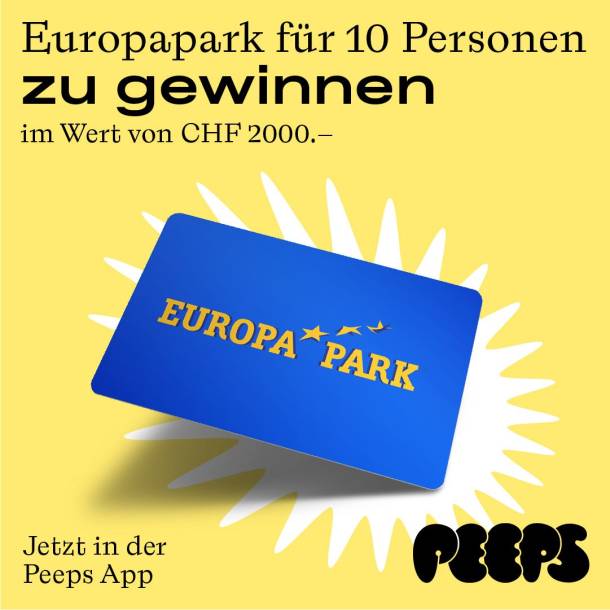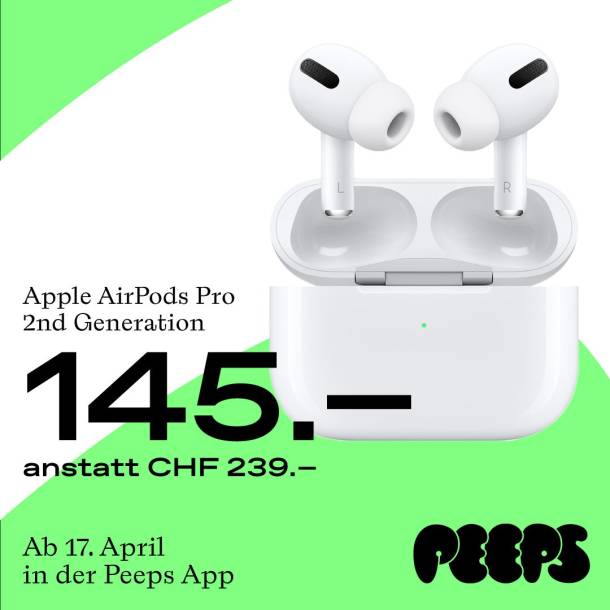There are many different ways to attract new users to an app: Ideally, an app is so innovative and attractive that it spreads by itself. However, in most cases this is and remains a pipe dream. Therefore the right mix of marketing measures is needed in order to increase the awareness of an app. One of these measures is performance marketing. This also includes so-called app user acquisition campaigns. We recently implemented one of these in a project and would like to share in this article what we learned and what needs to be considered.
What do we mean by user acquisition with performance marketing?
Performance marketing is a specific type of marketing in which the success of a marketing campaign is evaluated using clearly measurable metrics. In contrast to "traditional" marketing approaches, which often have effects that are difficult to quantify, performance marketing aims to achieve clear goals. Online marketing measures, such as search engine advertising (SEA), are correspondingly well suited, as campaigns can be aligned to a specific goal, tested and continuously optimised based on the supplied database.
Especially for the acquisition of new users, performance marketing can be a suitable measure. Advertising campaigns can be targeted to specific audiences, reaching potential users who are most likely to be interested in the services or functions offered.
By user acquisition with performance marketing, we mean (online) marketing measures that are specifically aimed at acquiring new app users. The marketing measures are continuously optimised based on the available data.
In this example, the marketing measures included paid ads in the advertising networks of Meta (Facebook and Instagram), Google and Apple.
In the following, we explain the basics needed for a successful user acquisition campaign, what steps need to be gone through and specifically how we implemented the campaign.
Basics for a successful user acquisition campaign
Even before launching a campaign with paid advertising, it is important to build a good foundation and set up the necessary tools for a successful user acquisition campaign.
This includes, among others, the following aspects:
Publish a stable app that creates added value and offers a good user experience
Optimize the app store presence. App Store Optimization (ASO) is an important measure to make an app findable in the app stores in the first place and to optimize the conversion rate from visitors to app downloads. In the blog post: "ASO - Tips and Tricks for App Store Optimization" you will find all the important details on how to achieve an optimal App Store presence.
Integration of user tracking and analytics in the app, so that it is possible to measure how / from where / how many new users are acquired and how the app is used.
In order to set up an advertising campaign with a measurement of downloads at all, it is necessary to integrate the corresponding SDKs (Software Development Kits) of the individual advertising networks or an SDK of a so-called Mobile Measurement Partner (MMP). More on this in the section below.
Create clarity about the target group. In the run-up to the campaign, you have to define who exactly you want to reach.
Create good graphics, images or multimedia content that can be used for the campaign.
Clear messages that communicate the added value for the target group concisely and can be used as promotional texts for the advertising material.
Phases of a User Acquisition Campaign
Strategy, planning, goals: Initially, you should define what exactly you want to achieve with a user acquisition campaign: Increase the number of app installs, increase in-app purchases or increase user activity? Clear and realistic goals should be set for the campaign.
Set-up of tools and accounts: As mentioned above, an analytics solution should be built into the app so that information about user behavior can be measured. Since a large amount of campaign data can be generated when ads are placed on multiple ad networks, it is difficult for app marketers to keep track of which ads on which media actually lead to conversions. This is why a third-party provider or tool often comes into play to help. This is called a Mobile Measurement Partner - MMP. The tool measures the performance of app campaigns along the app marketing journey.
Creation of advertising media
Start and learning phase: The platforms on which ads are placed "learn" which ad variants, bids etc. work best. In this phase, there may be fluctuations in ad performance as the platforms test and optimize different strategies.
Performance phase - Data-driven optimization
Reporting of the campaign in combination with app usage data
Closing and summarizing all data and insights for future campaigns
-
What is a Mobile Measurement Partner (MMP)?
An MMP is a tool that is used to measure the performance of app campaigns along the app marketing journey. The performance data of the individual tools is attributed, collected and organized. This makes it possible to evaluate the key figures and campaign performance and thus serves as a decision-making basis for further campaign optimization and management. Within an MMP tool, individual reporting can be created on the basis of the campaign tool data, depending on the tool options. For data measurement, the respective MMP SDK must be installed in the app.
Implementation of a user acquisition campaign based on an example
To make it easier to illustrate how the individual steps from set-up to learning phase to reporting of a user acquisition campaign work and what there is to consider, let's take a real case study of the user acquisition campaign we implemented for the Peeps app in collaboration with INTR and the agency mso digital, which specializes in performance marketing.
Peeps App
In the Peeps app, a young person is portrayed every day. In the form of short articles their lifestyles and favorite things are presented. This reflects the diversity of young people in Switzerland. The app was designed by young people for young people and is aimed at the 16-30 age group. In addition, there is a shop with discounted products within the app. There are also regular raffles of products or vouchers in which users can participate.
Peeps was launched by PUBLISHR GmbH. It is a subsidiary of INTR AG. INTR has been working with young people for several years on various projects and organizes and supports the young editorial team of PUBLISHR GmbH in their work. PostFinance is the exclusive cooperation partner. We are responsible for the technical development and operation of the software.
User Acquisition Campaign for Peeps
The aim of the campaign for Peeps was to generate as many app installs as possible. The aim was to draw the attention of the target group to Peeps and encourage them to download the app. To achieve this goal, different campaign types were displayed on several channels.
While the creation of the advertising material in the necessary formats and specifications for the various advertising channels was implemented by INTR, mso digital took care of the campaign setup, delivery, optimization and reporting. We at Apps with love were responsible for the necessary integration of analytics and attribution tools in the code and the optimization of the app store appearances.
Advertising Networks and Budget Allocation
In order to achieve the goal of as many app installs as possible for Peeps, ads were placed in the Meta, Google and Apple advertising networks.
Meta - App Install: Ads that are specifically targeted to App Installs and played out on Meta's various platforms - i.e. on Facebook, Instagram, Messenger or also in the Audience Network (third-party providers that work together with Facebook).
Google Ads:
Universal App Campaign (UAC): Features complete automation: The targeting and bids are automatically created based on the app. What needs to be provided is text, visual assets, the languages in which the app is available and the budget to be used. Google then automatically creates different combinations of assets and displays the ads that perform best. The ads appear in the search and display network, in the Google Play Store and on YouTube.
Search Brand Campaign: Aims to increase a brand's visibility and drive potential users directly to a brand's official website or other relevant page.
Apple Search Ads: Apple Search Ads allow apps to be highlighted in the search results of the Apple App Store. They are thus an effective means of increasing visibility in the App Store and being found for specific keywords.
The channels and campaign types were chosen because they can be optimized towards the overall goal of app installs and thus achieve a lower cost per install (CPI) compared to other campaign types, as the focus is clearly on app installs.
The search brand campaign was created using only brand keywords. The aim was to direct users searching for the Peeps app via Google search to the Peeps website, where they can find more information about the app. A link to the App Store and Google Play Store is available on the website. The conversion for the search campaign was tracked as a visit to the App Store.
The campaigns and ad groups were created separately for the languages German, French and Italian. The learning from previous campaigns was that the more targeted approach and consideration of the individual languages is perceived positively by the users and thus a better performance can be expected. This was confirmed in the course of the campaign.
The budget was distributed by channel and language at the start of the campaign. The potential reach of the channels was taken into account:
Meta: 24 %
Google Ads UAC: 56 %
Google Ads Search: 3 %
Apple Search Ads: 17 %
For Meta and Google Ads UAC, a separate campaign was created for Android and iOS. The distribution between the operating systems was 50:50, which roughly corresponds to the market shares of the operating systems in the target market of Switzerland.
Furthermore, on the basis of the channel budget distribution, the distribution was made according to the languages German (70 %), French (25 %) and Italian (5 %).
Advertising Media / Creatives
For the Meta App Install campaigns and Google UAC, a large number of creatives, i.e. images, graphics and videos, were provided during the campaign runtime, which were activated and exchanged according to predefined runtimes.
For both channels, the creatives focused on the discounted product offers and raffles within the app. The focus in the advertising was thus fully placed on the major unique selling points (USP) of the app in order to achieve installs. In addition to these creatives, two different generic creatives were also provided to introduce the Peeps app in general.
Static ads in the form of images and/or videos were used on all platforms. Static ads are ads that do not change over time. The same set of ads is shown to all users. Static ads are usually chosen when a large audience needs to be reached and a brand needs to be promoted. The advantages of static ads are that they are usually accepted by most ad networks and are easier to create.
In addition to static ads, there are also dynamic ads. These change according to user behavior and are therefore targeted at specific users respectively the most relevant ads are displayed for specific users. Dynamic elements of ads can include, for example, prices or the product displayed. They are a little more complex to implement than static ads, as it requires a data base - for example, an inventory - to display personalized ads. Dynamic ads are often used in remarketing campaigns.
Video ad focusing on the discounted AirPods
Which tools did we use and why? Adjust as MMP
In the Peeps campaign we used Adjust as the MMP. As an established tool, Adjust offers all the important functions necessary to analyze the effectiveness of user acquisition campaigns:
An SDK which can be used for different tools
Integration of a variety of tools (Partner Data)
Custom event tracking
Creation of alerts (Pulse)
Reports & dashboards including different segmentation options (Datascape)
Audience Builder - customized target group lists for retargeting and re-engagement and more
Deeplink Generator
Furthermore, Adjust is DSGVO compliant, has a fair pricing and offers good support, which is why we chose Adjust as MMP in the case of Peeps user acquisition.
Results
The user acquisition campaign for Peeps ran for 2 months. We can't go into all the figures and KPIs in detail, but we are happy to give an overview of the most important results. Nevertheless, it is of course important to say that the results can vary significantly depending on the case or app. In this respect, the figures are not generally valid and should only be regarded as a guideline.
On which did the campaign perform best?
About 50% of the installs were achieved via the Google UAC App Campaigns, followed by Meta. The lowest CPI (Cost per Install) and the most clicks (57%) were achieved via Meta.
How high were the costs per install?
Over the two-month campaign period, a CPI of around CHF 3.- was achieved. In comparison, this is a rather low or good value - for an app of this kind in the Swiss market. It should be noted that Peeps offers material incentives through the greatly reduced prices in the shop and the raffles. For apps that do not have such incentives, are in a more competitive market segment or have a more restricted target group, the costs per installation can differ significantly. General statements are difficult, however, an overview can be found in the "Cost per Install (CPI) Rates" report by Business of Apps.
Our biggest insights from the Peeps User Acquisition Campaign
Language-specific targeting and creatives in a multilingual country were recorded as positive in this case. The number of app installs was higher than in previous campaigns. Unsurprisingly, the users feel more addressed by language-specific ads.
The channels and campaign types selected should be based on the overarching goal. In this case, the overarching goal was app installs and thus, the campaign types selected had this focus. A clear differentiation between branding and conversion goals should be established in advance.
Different creatives appeal to different users - to reach the largest possible target group, variance in the creatives is necessary. In the case of Peeps, this was ensured by changing offers and raffles. For particularly attractive offers and raffles, peaks in the number of installs were be recorded.
Testing, testing, testing: After the goal has been clearly defined, different approaches and possible channels as well as creatives should be tested in order to be able to derive learnings and optimization approaches. Relevant channels can vary depending on the type of app.
The use of an MMP, such as Adjust, simplifies cross-channel reporting and monitoring.
What's next? Remarketing campaign
App installs are an important factor, but they do not say much about the use and thus the sustainable success of an app. It is much more important to bring users back to the app again and again in the long term. App remarketing is a suitable instrument for this.
App Remarketing comprises two core areas:
Retention: Bringing users who have already installed the app back to the app again and again
Getting in-app events such as registrations after the app install. The achievement of in-app events can vary depending on the app
The app retention rate provides information about how many users are still using an app after it has been installed for a certain period of time. If the app has a high retention rate, this is an indicator that the users like using the app. If the retention rate is low, the app should be checked for content, usability and other possible disruptive factors.
App remarketing campaigns can also be used to draw users' attention to content that might be of interest to them. The app remarketing campaigns should run separately from the app install campaigns and be geared towards the goal of increasing the retention rate or correspondingly towards defined in-app events. The further marketing of the Peeps app will also move in this direction.
Our conclusion on user acquisition with performance marketing
For the Peeps app user acquisition campaign, clear goals (target CPI and number of desired app installs) were defined before the start of the performance marketing campaign. For this purpose, various reports for the ongoing campaign evaluation were created in advance with the use of the MMP Adjust, which proved to be a good basis for deriving recommendations for action and optimization approaches during the campaign.
The choice of channels and campaign types with a focus on app installs was crucial for the achievement of the objectives and the associated success of the performance marketing campaign. In the case of this Peeps campaign, we didn't use pure branding campaigns, although these had already been used in a focused manner in previous campaigns. However, they did not achieve the desired app installs. The now clear focus on App Install campaigns via the Meta, Google Ads and Apple Search Ads channels has proven successful. However, the choice of campaign types and strategy must be re-evaluated for each case.
The creatives used are an important part of the campaign's success. Clear benefit communication (offers and raffles) have proven successful in the Peeps Case. In previous campaigns, the focus was on themes. In order to be able to draw lessons for the further creation of creatives, different approaches should be tested.
Do you need support with performance marketing, integrating a suitable MMP or optimization of an ongoing campaign? We are happy to help! Just get in touch via e-mail.






